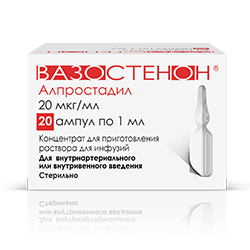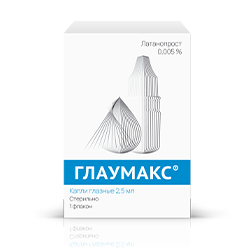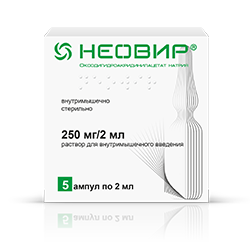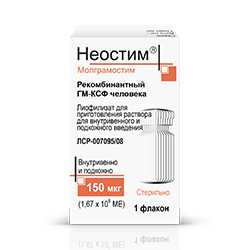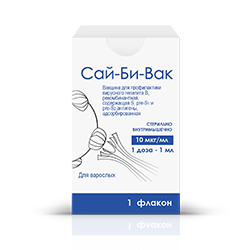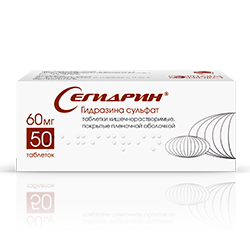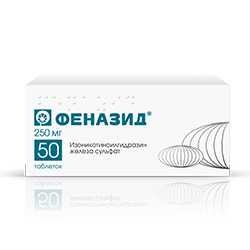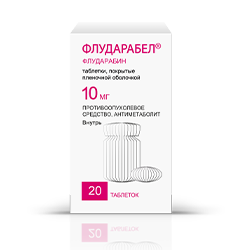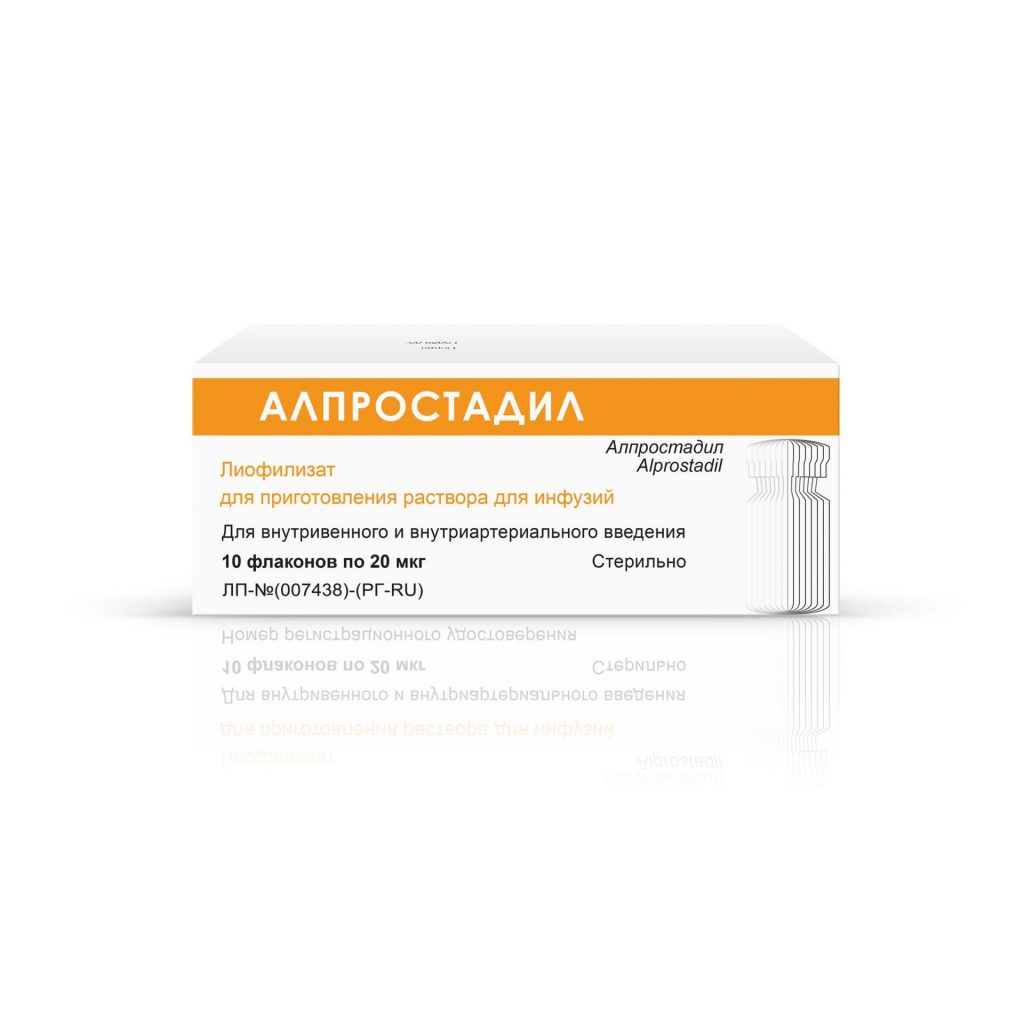Recent Patents on Drug Delivery & Formulation
He Meng1,#, Sanjay Jain2,#, Curtis Lockshin1,*, Umesh Shaligram3, Joseph Martinez4, Dmitry Genkin5, David B. Hill6,7, Camille Ehre7,8, Dana Clark4 and Henry Hoppe IV1
1Xenetic Biosciences, Incorporated, 99 Hayden Avenue, Lexington, MA 02421, USA;
2Envigo, Woolley Road, Alconbury, Huntingdon, Cambridgeshire, PE28 4HS, UK;
3Serum Institute of India Limited, Off Soli Poonawala Road, 212/2 Hadapsar, Pune 411028, India;
4F(x) Immune Diagnostics Incorporated, 1463 Sand Hill Road, Candler, NC 28715 USA;
5Pharmsynthez, Krasnogo Kursanta St, 25, Saint Petersburg, 197110, Russia;
6Department of Physics and Astronomy, The University of North Carolina at Chapel Hill, NC 27599, USA;
7Marsico Lung Institute/Cystic Fibrosis Center, The University of North Carolina at Chapel Hill, NC 27599, USA and 8Department of Pediatrics, The University of North Carolina at Chapel Hill, NC 27599, USA
Abstract:
Background: While protein therapeutics are invaluable in managing numerous diseases, many require frequent injections to maintain therapeutically effective concentrations, due to their short half-life in circulation. PolyXen™, a platform and patented technology employing biodegradable, non-immunogenic and hydrophilic polysialic acids (PSA) for drug delivery, is being utilized to overcome such limitations, thereby potentially enabling the clinical utility of a broad range of protein therapeutics. Here, we report the recent progress on two development candidates, polysialylated deoxyribonuclease I (PSA-DNase) and polysialylated erythropoietin (PSA-EPO).
Methods and Results: Chemical polysialylation of DNase I (DNase) using PSA with different chain length at various conjugation sites led to improved stability against proteases and thermal stress, and slightly reduced enzymatic activity. Polysialylation of EPO resulted in retention of protein structure and PSA-EPO remained biologically active. PSA-EPO had a significantly prolonged circulating half-life (e.g. t1/2 of PSA-EPO = ~400 h in patients after subcutaneous administration, aimed for once monthly administration, vs. t1/2 of EPO = ~22 h; administered twice or thrice weekly), and retained in vivo efficacy. This approach has been clinically validated in phase I (in healthy volunteers) and II studies of PSAEPO [for managing anemia in patients with chronic kidney disease (CKD)].
Keywords: Biodegradability, drug delivery, immunogenicity, pharmacokinetics, pharmacodynamics, polysialic acids, colominic acid, protein therapeutics.
- INTRODUCTION
Biopharmaceutical drugs, including peptides and proteins, have transformed medicine, as they can address targets that often are not treatable by small molecules. However, complex macromolecules do have limitations, such as sensitivity to storage conditions, instability in circulation, undesired immunogenicity and antigenicity, which can lead to reduced clinical and commercial utility. Half-life extension is a common approach to improve biological therapeutics, as clinical efficacy is highly dependent on this pharmacokinetic (PK) parameter. Methodologies for extending half-life include polymeric delivery, design of fusion proteins, glycoengineering and nanoparticles [1-6], all of which have been employed for developing next-generation biopharmaceuticals.
PolyXen™ is a platform technology for drug delivery, in which polysialic acid (PSA) — a naturally occurring, highly hydrophilic, non-immunogenic, linear homopolymer of sialic acid (N-acetyl neuraminic acid, Neu5Ac) — is attached to a protein to improve its in vivo pharmacokinetics and pharmacodynamics (PD) [7, 8]. The polysialic acid used (also called colominic acid) in PolyXen™ consists of α2-8 linkages and is present in both microbes and human tissues. Of particular noteworthiness, microorganisms coated with this polysaccharide, such as N. meningitidis serogroup B (NmB), can evade human immune surveillance and complement response [9, 10]. In addition, certain tumor cells overexpress glycoproteins containing terminal sialic acids, forming sialic acid decorated surfaces which avoid recognition by immune cells [11, 12]. Recognizing these stealth features enabled by sialic acids, it was postulated that polysialylation could reduce the immunogenicity and antigenicity of therapeutic proteins [13]. Furthermore, PSA is highly hydrophilic and is suitable as a bulking agent to improve the pharmacokinetics of protein drugs, in a manner conceptionally similar to PEGylation and XTEN technology [14-16]. PSA is inherently biodegradable and the catabolic products are not known to be toxic. All these properties are important for next-generation therapeutics, especially in clinical scenarios where chronic use is required (e.g. anemia).
Several proteins have been polysialylated in attempts to improve their pharmacological properties including highly immunogenic enzymes such as asparaginase [17, 18], metastable proteinase inhibitor α1-antitrypsin [19], tissuepenetrating antibody fragments [20, 21], blood clotting factor VIII (FVIII) [22, 23], and dimeric as well as tetrameric butyrylcholinesterase [24, 25]. Here, we report the effects of polysialylation on deoxyribonuclease I (DNase) and erythropoietin (EPO), with respect to protease protection, thermal stability, biological activity, duration of action and in vivo efficacy. Previous and ongoing studies suggest that polysialylation could serve as a broadly applicable and effective approach for enhancing therapeutic proteins [26-28].
DNase is an endonuclease that selectively cleaves the phosphodiester bond in deoxyribonucleic acid (DNA). Its recombinant form, Dornase α (Pulmozyme®), has been used in combination with standard therapies for the treatment of cystic fibrosis (CF), as it effectively breaks down the abundant extracellular DNA found in mucus of CF patients, thereby reducing the mucus’ viscoelasticity and facilitating its clearance from the lungs [29]. As the lung secretions of CF patients are rich in proteases, a stable, protease-resistant form of DNase represents an opportunity for an improved next-generation therapy [30].
Recombinant human erythropoietin (rhEPO), an erythropoiesis-stimulating agent (ESA), has become indispensable for the treatment of all forms of anemia [31]. Since the approval of Epogen in 1989, considerable efforts have been devoted to improve this protein, which requires multiple injections per week because of its rapid renal clearance due to its small size of ~30 kDa. These efforts have led to the commercial availability of long-acting EPOs such as Aranesp® and Mircera®.
The success of long-acting EPOs relies on the retained interaction between EPO and its cognate receptor (EPOR) at a molecular level [32-34], and the prolonged residence time at a systemic level. As hyperglycosylation and PEGylation of EPO at selective sites resulted in Aranesp and Mircera that have improved PK properties and in vivo activity [33, 35, 36], we reasoned that attachment of PSA to the N-terminal end of EPO would likely afford an active conjugate with extended circulating half-life, thereby potentially yielding a commercializable next-generation EPO therapy. Several elimination pathways of EPO (e.g. renal clearance, receptor-mediated endocytosis and degradation, and possible others) are likely hindered simultaneously by the attached PSA.
- MATERIALS AND METHODS
2.1. Materials
Polysialic acid was manufactured using E.coli K1 cells at Serum Institute of India Limited (SIIL) according to Current Good Manufacturing Practice (cGMP) standards. Briefly, cells were grown in a bioreactor under controlled conditions (e.g. media, pH, dissolved oxygen and agitation) for a defined period. PSA was harvested, hydrolyzed, purified, oxidized and then lyophilized to give activated PSA with various molecular weights (MWs) [37]. The activated PSAs generally had a degree of oxidation in the range of 80-120%, polydispersity (pd) less than 1.15, O-acetylation less than 0.35 mole%, free amine content less than 0.1 mole% and endotoxin unit (EU) below 100 EU/100 mg
Recombinant human DNase (rhDNase) was manufactured under cGMP conditions by Catalent Pharma Solutions (Madison, WI, USA) using a proprietary Chinese hamster ovary (CHO) cell line. PSA-DNase used for clinical trial was manufactured at Pharmsynthez using the reductive amination method as described in Section 2.2 below. PSA-DNase was formulated in calcium chloride and sodium chloride at pH 6.3. Carla Riberiro, The Cystic Fibrosis Center and Department of Medicine, University of North Carolina, provided supernatant of mucopurulent material (SMM) used in DNase assays.
Recombinant human EPO (rhEPO) alpha was produced in CHO cells using serum-free media at SIIL under cGMP. PSA-EPO used for clinical trials is formulated as a sterile, preservative-free solution for subcutaneous (SC) administration. The drug product contains PSA-EPO drug substance and sodium chloride, sodium dihydrogen phosphate monohydrate, disodium hydrogen phosphate dodecahydrate, sterile water for injection.
Sodium cyanoborohydride, sodium azide, acetonitrile, trifluoroacetic acid, PBS and other common chemicals were procured from Sigma-Aldrich and were used directly. Endosialidase (Endo-N) was from ABC Scientific. Electrophoresis gels, staining agents and running buffers were from Life technologies.
2.2. PSA-DNase
2.2.1. Synthesis and Purification of PSA-DNases
Sodium periodate-activated PSA (14, 24 or 32 kDa) was coupled to DNase, intended at N-terminal primary amines, by means of reductive amination in the presence of sodium cyanoborohydride (NaCNBH3), using procedures similar as previously disclosed [38]. In the case of glycan-directed conjugation, PSA was functionalized with an amine-bearing linker. Glycans on the DNase molecule were activated with sodium periodate, followed by reductive amination assisted by sodium cyanoborohydride [39]. The conjugates were isolated by hydrophobic interaction chromatography (HIC), anion exchange chromatography (AEX), ultrafiltration and diafiltration (UF/DF).
2.2.2. Molecular Characterization of PSA-DNases
The purified PSA-DNase conjugates were analyzed by sodium dodecyl sulfate-polyacrylamide gel electrophoresis (SDS-PAGE), size exclusion chromatography-tetra detector array (SEC-TDA), resorcinol assay and reverse phase-high performance liquid chromatography (RP-HPLC) for their MW, PSA to protein molar ratio and purity [40]. The starting recombinant DNase was characterized by liquid chromatography-mass spectroscopy (LC-MS) and HPLC for its peptide backbone and glycan profiles, and the starting PSA was characterized for its degree of oxidation, MW and pd by colorimetric assay and SEC-TDA. The enzymatic activity of conjugates was determined by a methyl green (MG) assay as previously described [41, 42].
2.2.3. DLS Characterization of PSA-DNases
The conjugates were analyzed for their size by dynamic light scattering (DLS) using a Malvern Zetasizer nano ZS. The thermal stability of DNase and PSA-DNases was evaluated by melting point experiments. The unconjugated PSA was added to DNase solution, at molar ratios of 1:1 or 10:1, to serve as controls.
2.2.4. DNA Degradation Assay
Genomic deoxyribonucleic acid (DNA) was treated with DNase and PSA-DNase over 6 hour (h) at 37°C. Samples at various time points were applied to agarose gel, electrophoresed, stained by ethidium bromide, and imaged. Nontreated genomic DNA and a 10kb ladder were included as controls.
2.2.5. Enzymatic Activity after Treatment with SMM
DNase and PSA-DNases (0.6 μg/mL) were incubated with SMM for 6 h, then genomic DNA was added for 30 minutes (mins). A PicoGreen assay was used to measure the residual DNA concentrations, as previously described [43].
2.2.6. Rheological Measurement of CF Sputum after Enzyme Treatment
Cystic fibrosis (CF) sputum was treated with DNase and PSA-DNases for 15 mins, and changes in rheological properties were measured using a Bohlin Gemini rheometer using a 20mm parallel plate geometry as previously described [44, 45].
2.2.7. Phase I Clinical Trial of PSA-DNase
A single center, open-label, non-randomized phase I clinical study, sponsored by Pharmsynthez, evaluated the safety and tolerance of PSA-DNase prepared using 14 kDa PSA via reductive amination (14K PSA-DNase RA) in two consecutive groups at repeated inhalation by healthy volunteers during 7 days.
2.3. PSA-EPO
2.3.1. Synthesis of PSA-EPO
Sodium periodate-activated PSA (15 kDa) was coupled to EPO via reductive amination at molar ratio of PSA to EPO 25:1 in the presence of sodium cyanoborohydride at room temperature. The conjugates were isolated by HIC, AEX and gel filtration chromatography, followed by UF/DF [46].
2.3.2. Molecular Characterization of PSA-EPO
The apparent MW of the conjugate was determined by SDS-PAGE. Protein concentration was determined by UV280nm and/or amino acid analysis. The resorcinol assay was used to determine PSA content. The primary structure (amino acid sequence) of PSAEPO was determined by electrospray ionization time-offlight mass spectrometry (ESI/TOF-MS) analysis of the polypeptide after removal of N-glycans. RP-HPLC peptide mapping of the N-deglycosylated peptides using Endo Lys-C and trypsin-digested mixtures were employed for identification of conjugation sites. Circular dichroism (CD) spectra of EPO and PSA-EPO were recorded in the far-UV region. Thermal denaturation was monitored by following the CD signal at 222 nm. Tm was determined using a sigmoid fit representing a two-state transition.
2.3.3. In Vitro Degradation of PSA-EPO
PSA-EPO was incubated with Endo-N sialidases at various ratios at 37°C; the mixtures at time points were profiled by SEC-HPLC to detect the hydrolysis of PSA.
2.3.4. In Vitro and In Vivo Bioactivity of PSA-EPO in Animals
Female Wistar rats (8-9 weeks old) were subcutaneously injected with EPO or PSA-EPO on day 0 (0.6 or 1.5 μg/kg). Blood samples (20 μL) were taken from the tail vein at day 0, 4, 7, 9 and 11. An aliquot of blood samples was diluted with Reticdye R and analyzed for reticulocytes by fluorescence- activated cell sorting (FACS). In vitro bioactivity of PSA-EPO was also determined on murine splenocytes, derived from anemic mice using a 3H-thymidine incorporation assay [47].
2.3.5. Clinical PK and PD
A multi-center, open-label, randomized, parallel group, single-dose study in CKD patients not on dialysis was conducted to evaluate PK and PD properties of PSA-EPO. Three cohorts of CKD patients, not on dialysis were administrated with PSA-EPO at three dose levels (0.5, 1.0, and 2.0 μg/kg) via single SC injection. Blood samples were drawn pre-dose and post-dose at time points, centrifuged, decanted and stored at -20°C until analyzed. The serum PSA-EPO was detected by an analyte capture sandwich enzyme-linked immunosorbent assay (ELISA). The assay is sensitive in detecting PSA-EPO in human sera with a lower limit of detection (LOD) for PSA-EPO at 526 pg/mL. The absolute reticulocytes were measured by flow cytometry using a Coulter Counter.
2.3.6. Immunogenicity Assay
Luminex beads were coupled with either PSA, EPO, or PSA-EPO, and the conjugated beads were used to capture any anti-PSA, anti-EPO, or anti-PSA-EPO IgG and IgM antibodies from human sera collected at day 28 post-dose. Secondary antibodies (anti-polysialic acid-NCAM antibody, clone 2-2B, Chemicon, anti-human IgM-PE conjugated antibody, or anti-human IgG, Jackson ImmunoResearch) were used for detection. Raw data collected on the Luminex instrument were analyzed using Masterplex QT to estimate antibody concentrations (if any) by comparison to a 4-P standard curve.
- RESULTS AND DISCUSSION
3.1. Polysialylated DNase
3.1.1. Construction of PSA-DNase
Polysialylated DNases were prepared using two different conjugation strategies: one targeted glycosylation sites for PSA attachment, while the other preferentially linked the PSA chain to N-terminal primary amines. PSA (Fig. 1A) from E.coli fermentation was sized by hydrolysis, activated by sodium metaperiodate, and fractionated to give polymers with defined MW and pd [48]. The activated PSA contained an aldehyde group at the non-reducing end of the polymer chain (Fig. 1B). For N-terminal derivatization, the activated PSA reacted with the N-terminal primary amines of DNase to generate PSA-DNase RA under mildly acidic conditions (Fig. 1C) [40]. For glycoconjugation, the activated PSA was functionalized with an amine-bearing linker, and the surface carbohydrates of DNase were oxidized to generate aldehydes [49]. The amine-functionalized PSA then reacted with aldehyde- containing DNase to create PSA-DNase glycan polysialylation (GP) [50]. The conjugates were then purified by HIC and AEX chromatography, and UF/DF.

Fig. (1). Polysialic acid and polysialylated DNases. (A) Chemical structure of polysialic acid. (B) Activated polysialic acid. The polysialic acid is functionalized at the non-reducing end to have either an aldehyde or an amine group. (C) Schematic presentation of polysialylated DNases. The attachment of PSA chain(s) can be directed either at N-terminal primary amines or at glycan(s).
3.1.2. Characterization of PSA-DNase
The conjugates were characterized for their MW, degree of conjugation, molecular size, enzymatic activity and thermal stability. Their apparent MW was characterized by SDSPAGE, (see Supplement Fig. 1 for representative conjugates). Their degree of conjugation was determined by a resorcinol assay, and/or confirmed by SEC-TDA (Fig. 2A). All PSA-DNase conjugates were analyzed by a methyl green (MG) assay for their activity [41], relative to a reference DNase. Six out of the 10 conjugates displayed greater than 50% enzyme activity relative to the reference standard (Fig. 2B, Supplement Table 1). The conjugates with single PSA chain attached at the N-terminus retained the most DNase activity, and the conjugate with the smallest PSA chain length in the range studied had the best activity. The conjugates with PSA chains attached to the glycans were less active, compared to the N-terminal conjugated DNases. Multiple attachments of PSA chains resulted in further decreases of enzymatic activity. Still, with two 32 kDa PSA attached at the glycans, the conjugate retained significant activity (~50% of activity of DNase). Based on the retained enzymatic activity and cost of manufacturing at scale, the 14K PSA-DNase RA, 24K PSA-DNase RA and 24K PSA-DNase GP were selected for further characterization.
The molecular sizes of 14K PSA-DNase RA and 24K PSA-DNase RA were measured by SEC-TDA and dynamic light scattering (DLS). As the correlation between apparent size and MW differs for proteins and PSA polymers (the increase in a PSA polymer’s apparent size vs. MW is greater than for proteins, due to a difference in respective hydration dynamics and intramolecular tertiary interactions) interpretation of sizing measurements for PSA-protein conjugates requires application of its own empirical standard. As shown in Fig. 2C, the size of 14K PSA-DNase RA (~47 kDa) is similar to that of bovine serum albumin (BSA) dimer with an MW of ~120 kDa, and the size of 24K PSA-DNase RA (MW ~57 kDa) is close to that of trimeric BSA (MW ~180 kDa). Considering that the pore size for filtration in the renal membrane is about the size of monomeric BSA, the conjugation of a 14 kDa PSA to a protein of DNase size (~32.6 kDa) would provide enough bulking effect to decrease the direct removal of the conjugates by the renal clearance pathway.
Thermal stability of proteins is often indicative of both in vivo stability and stability in commercial formulations. Thermal denaturation of various PSA-DNases was evaluated by DLS. The onset of unfolding/aggregation of all PSADNases occurred at a temperature ~5°C higher than that of DNase (Fig. 2D). This unfolding and aggregation were irreversible, consistent with a previous study on DNase [51]. The sizes of aggregates of 14K PSA-DNase RA and 24K PSA-DNase RA upon heating were much smaller, compared to those generated from DNases. The measured particle size of DNases with PSA added to the assay buffer, increased with temperature ramping in a manner similar to that of DNase alone. These results demonstrate that covalently linked PSA, not the free PSA in the solution, provided a stabilizing effect against the thermal stress and mitigated the formation of large aggregates. A similar protective property against environmental stressors has been reported for a trehalose glycopolymer [52] and heparin-mimicking polymer [53] (a copolymer consisting of styrene sulfonate units and methyl methacrylate units bearing PEG side chains) designed by Maynard and coworkers.
3.1.3. Genomic DNA Digestion
Genomic DNA digestion by 14K PSA-DNase RA was compared side-by-side with Dornase α at concentrations of 0.6 and 3 μg/mL (based on the specific activity of the protein). Migration patterns of digested DNA in the agarose gel were visually inspected and used to evaluate the enzyme activity. Intact genomic DNA migrated as a diffuse smear, while DNA treated with enzymes ran faster and condensed into narrower bands that represented a distribution of low MW DNA fragments. Further digestion of these cleaved DNAs generated much smaller fragments that run off the gel. Both 14K PSA-DNase and Dornase α hydrolyzed DNA in a time- and concentration-dependent fashion (Fig. 3), and displayed a similar activity profile, with 14K PSA-DNase RA being slightly more active at several time points. Similar results for enzyme activity were also obtained in CF sputum (data not shown).

Fig. (2). (A) SEC-TDA traces of representative 14K PSA-DNase RA. The degree of conjugation (~1 mole PSA per DNase) was determined by the UV and refractive index (RI) signals. The MW of this conjugate was calculated by right angle light scattering/low angle light scattering (RALS/LALS) detectors to be ~47 kDa. (B) The enzymatic activity of various PSA-DNases. The activity relative to a DNase in house reference standard was measured using a Methyl Green assay. The number after PSA indicates the number of PSA chains per DNase, evaluated by a resorcinol assay. RA and GP indicate that the conjugation sites were intended at the N-terminal primary amines and glycans, respectively. For example, 14K PSA1 RA refers to a DNase conjugate containing 1 chain of 14 kDa PSA, prepared via reductive amination that was intended to occur at the N-terminal amine. (C) Hydrodynamic radius of DNase and PSA-DNases measured by SEC-TDA and DLS, with BSA as control. (D) Thermal denaturation/aggregation of DNase and PSA-DNases evaluated by DLS temperature ramping experiments. The control samples contained DNase with free PSA added, with a molar ratio of PSA to DNase at 1:1 or 10:1. Conjugates were formulated in 150 mM NaCl, 1 mM CaCl2, pH ~6.3.

Fig. (3). Side-by-side comparison of 14K PSA-DNase RA (1) and Dornase (D) with respect to genomic DNA digestion. DNA samples were treated with enzymes at two concentrations (0.6 and 3 g/mL) and analyzed at various time points over 6 h. The amount of enzymes used was adjusted based on their specificity activity. Non-treated DNA (NT) and a 10 kb ladder were included as controls. The agarose gel was stained with ethidium bromide.

Fig. (4). (A) Superior activity of PSA-DNases after incubation with SMM. Enzymes were incubated with SMM for 6 h before adding genomic DNA for 30 min. The concentration of residual DNA was determined by a PicoGreen assay. The final enzyme concentration was 0.6 g/mL (n = 3). The concentrations of enzymes were adjusted based on their specific activity. (B) Rheological measurement of CF sputum treated with Dornase and PSA-DNases for 15 mins. Elastic modulus (G) and viscous modulus (G) were determined via a cone and plate rheometer using the same sputum (n = 3). Phosphate buffered saline (PBS), Dornase (D), 14K PSA-DNase RA (1), 24K PSA-DNase RA (2) and 24K PSA-DNase GP (3). These assays were run on n = 3 samples. The error bars are shown as mean ± SD.
3.1.4. Enzyme Stability in SMM
The enzymatic activity of PSA-DNases was next tested in the SMM from CF lung secretions, which contain proteases typically found in CF lungs such as neutrophil elastases. PSA-DNases were incubated with SMM for 6h and then genomic DNA was added. After 30 mins, DNA concentrations were measured by a PicoGreen assay [43]. Dornase α lost activity and was similar to the PBS control samples, while all three PSA-DNase species continued to digest DNA (Fig. 4A). The results demonstrated that PSA-DNases are more stable than Dornase α and remain active in a proteaserich, physiologically relevant environment.
3.1.5. Short-term Effect on Rheology of CF Sputum
To investigate whether PSA-DNases are more effective than Dornase α at reducing the viscoelasticity of sputum, CF sputum was treated with three forms of DNases for 15 mins after which the rheological properties were measured by a cone and plate rheometer. All three compounds significantly decreased viscoelasticity of sputum (Fig. 4B). Dornase α reduced the elastic modulus of sputum (G′) by 80%, and the viscous modulus (G″) by 72%, relative to nontreated sputum (NT data not shown). The 14K PSA-DNase RA reduced G′ and G″by 86 and 82%, respectively. Both 14K PSA-DNase RA and 24K PSA-DNase GP were superior to Dornase α in reducing the viscoelasticity of CF sputum, with the effect more pronounced on the elastic modulus. These aforementioned studies have demonstrated that polysialylation can increase the thermal and proteolytic stability of DNase. The chain length of PSA, conjugation sites, and the number of PSA chains attached, all have an impact on the enzymatic activity. Polysialylated DNases were superior to Dornase α in reducing the viscoelasticity of CF sputum. It will be useful to further investigate the structureactivity relationships of various conjugated DNases, in order to optimize the balance between nuclease activity and resistance to proteases. The statistical analysis (ANOVA) of the effect of PSADNase on CF sputum from several experiments showed that the treated samples (Dα, and both PSA-DNases) are statistically different from the control. T-test of the individual treatments show that PSA-DNase is statistically significantly different from Dα, but the two PSA-DNases treatments were not statistically different from one another.
3.1.6. Clinical Safety and Tolerability
The single center, open-label, non-randomized phase I clinical study, evaluated the safety and tolerance of 14K PSA-DNase RA in two consecutive groups at repeated inhalation by healthy volunteers for 7 days. Six volunteers in the first cohort were treated with a daily dose of 2,500 units of the investigational drug in 2.5 mL solution, while another 6 volunteers in the second cohort were administrated with 5,000 units in 5 mL solution. After 7 days of treatment, no significant adverse events and no significant influence on the respiratory function parameters were observed, demonstrating that 14K PSA-DNase RA is safe and well tolerated. In addition to CF, PSA-DNase may be useful for other disease indications where excess extracellular DNA or neutrophil extracellular traps (NET) contributes to disease progression [54], such as chronic obstructive pulmonary disease, metastatic pancreatic cancer and breast cancer [55, 56] as well as stroke [57].
3.2. Polysialylated EPO
3.2.1. Construction of PSA-EPO
PSA-EPO was generated from 15 kDa PSA and fully glycosylated recombinant EPO via reductive amination. The target 15K PSA-EPO was purified by HIC, AEX, SEC and UF/DF.

Fig. (5). CD measurements of 15K PSA-EPO and EPO. (A) Far-UV CD spectra of EPO and 15K PSA-EPO. (B) Thermal unfolding of EPO and 15K PSA-EPO monitored at 222nm with a heating rate of 1°C/min. [EPO] = 0.2 mg/mL.
3.2.2. Molecular Characterization
The MW of the PSA-EPO conjugate was found to be ~45 kDa (Supplement Fig. 2) by SDS-PAGE. The conjugate con tained an average ~1 mole of PSA per mole of EPO, measured by resorcinol assay and UV280nm. The attachment site of PSA was determined by peptide mapping after Lys-C digestion of PSA-EPO. The N-terminal peptides of PSA-EPO were detected only at signal intensities of 20-25% of those observed for the EPO starting material and reference standard, indicating that the majority of PSA had attached at the N-terminal primary amines of EPO (Supplement Scheme 1 and Fig. 3). The result of peptide mapping of PSA-EPO after tryptic digestion was consistent with this characterization (data not shown).
EPO is a compact globular protein, consisting of a four α helix bundle and two short helices. The structural integrity of EPO dictates its binding to and activation of EPOR. The crystal structure of EPO and EPOR, as well as alanine scanning have revealed that the N-terminus is distal to the effective binding interface between EPO and EPOR [33]. As observed by circular dichroism (CD), the secondary structure of EPO in the PSA-EPO conjugate remained highly similar to wild-type EPO (Fig. 5A), displaying a minimum at 208 nm and a shoulder at 222 nm [58]. The minimal structural perturbation of EPO, upon controlled polysialylation directed toward specific attachment site, is expected to permit the proper binding and activation of EPOR. Of additional note, the melting point (Tm) of PSA-EPO was ~13°C higher than that of EPO (Fig. 5B), illustrating superior thermal stability imparted by polysialylation. This increased thermal stability, and the high water solubility of PSA allowed the PSA-EPO to be formulated in a buffered solution without additional excipients such as albumin or polysorbate.
3.2.3. In Vitro Degradation by Sialidases
In humans, PSA found on native polysialylated proteins [such as PSA-neural cell adhesion molecule (PSA-NCAM)] is presumably degraded by both enzymatic and acid-induced mechanisms. We found that the PSA of PSA-EPO was hydrolysable upon treatment with endosialidases in phosphate buffer at physiological pH. PSA-EPO was incubated with Endo-N sialidases and the mixtures at time points were profiled by SE-HPLC. A shift of elution time indicated the hydrolysis of the PSA chain (Supplement Fig. 4). Depolymerization of PSA also occurs under acidic conditions similar to those found in endosomes and lysosomes [59, 60]. Such biodegradabilitycould mitigate the risk of tissue accumulation, particularly in clinical uses that call for high, frequent, or chronic dosing.

Fig. (6). Prolonged erythropoiesis induced by PSA-EPO in female Wistar rats (8-9 weeks old) at doses of 0.6 and 1.5 μg/kg body weight. Data are represented as mean ± s.e.m (n = 5 rats per group).
3.2.4. Biological Activity
In vitro activity of PSA-EPO was evaluated by a 3Hthymidine incorporation assay using spleen cells collected from phenylhydrazine (PHZ) treated mice [47]. 3H-thymidine is incorporated into newly formed chromosomal DNA in these pro-erythroblasts upon EPO stimulation. The acquired radioactivity was about 10- to 20-fold lower when treated with PSA-EPO, as compared to EPO on a protein equivalent basis (data not shown). However, this decreased in vitro potency of PSA-EPO did not lead to lowered response of erythropoiesis in vivo, as the extended half-life of PSA-EPO was the primary driver for the degree of erythropoiesis, not the decreased in vitro potency. In female Wistar rats (8-9 weeks old), PSAEPO increased reticulocyte levels at doses of 0.6 and 1.5 μg/kg body weight to a greater extent than EPO (Fig. 6). A dose-dependent response in terms of erythropoiesis for all EPO preparations was observed. Reticulocyte counts peaked at day 4 and returned to baseline level when given EPO at 1.5 μg/kg, while PSA-EPO exhibited a significantly prolonged duration of activity, lasting at least 7 days at both doses, with a gradual onset of action at 0.6 μg/kg.
It would be interesting to explore the cross-reactivity of human EPO to murine and rat EPOR in order to assess whether the reduced activity of PSA-EPO on murine erythroblasts could be due to a heterologous system if any.
3.2.5. Clinical PK and PD
Single-dose PK and PD were evaluated at three dose levels (0.5, 1 and 2 μg/kg body weight) after SC administration in CKD patients not on dialysis during a clinical study of PSA-EPO. The mean serum concentrations of PSA-EPO over time are shown in Fig. 7A. The maximum serum concentration (Cmax) was achieved at around 80-100 h for all three dosages, ranging from 1.4 to 9.3 ng/mL (Table 1), indicating a much slower absorption of PSA-EPO relative to rhEPO (Cmax, 15-29 h in healthy volunteers) [31]. The area under the concentration-time curve (AUC) increased in a dose-dependent manner (Table 1). PSA-EPO has a half-life of 400-500 h in CKD patients not on dialysis, significantly longer than that of rhEPO, which has a half-life of 19~24 h after SC injection. It should be noted that there is a pronounced difference in the half-life of PSA-EPO between patients and healthy volunteers (~120 h after SC injection). This result appears to be in direct contrast to rhEPO, which has comparable PK characteristics in healthy volunteers and CKD patients [52]. Nevertheless, conjugation of PSA greatly extended the half-life of EPO, which may lead to a oncemonthly injection or even longer interval between injections by adjusting the dose accordingly.

EPO binds to its receptors on progenitor cells in the bone marrow, and then stimulates proliferation and differentiation of erythroid cells, leading to the generation of reticulocytes, which develop into red blood cells. Absolute reticulocyte count (ARC), as the primary pharmacodynamic parameter, was measured by flow cytometry. The mean ARC was higher in the patients given higher doses of PSA-EPO during most visits, in the order of 2.0, 1.0 and 0.5 μg/kg cohorts (Fig. 7B). The absolute reticulocyte response in 2.0 μg/kg dose cohort reached a maximum at day 7, with sustained response until day 28, manifesting a property of long-acting ESAs.

Fig. (7). Single-dose PK and PD of PSA-EPO in CKD patients not on dialysis after single SC injection at 0.5, 1.0 and 2.0 μg/kg. A) Serum concentrations of PSA-EPO over time. B) Absolute reticulocyte counts over time. Data are represented as mean ± s.e.m (n = 10 or 9).
In a phase II clinical trial, CKD patients not on dialysis were treated with PSA-EPO with a dosing interval of 2 weeks during the correction phase, followed by 4-week dosing intervals, during the maintenance phase. The hemoglobin level was gradually improved to the therapeutic range [61] of 10-12 g/dL during the correction phase, and was stable in the maintenance phase (data to be reported). The increase of serum hemoglobin level was dose-dependent over several doses examined. These results together with the tolerability profiles suggest that PSA-EPO is promising as a nextgeneration long-acting ESA.
The ratio of AUC for pharmacodynamics (reticulocyte count) using 0.5, 1 and 2 μg/kg PSA-EPO doses were 1, 2.7 and 7.2 respectively. The number of subjects with significant response was higher in 2 μg/kg cohort, as compared to 0.5 and 1μg/kg cohorts.
At this stage, we do not have a clear understanding on why the half-life of PSA-EPO is much longer in patients, in comparison with EPO. EPO is eliminated from human bodies mainly by renal filtration and receptor-mediated internalization/degradation. One possible reason is that PSA is highly negatively charged, and therefore removal of PSA-EPO through filtration via the basal membrane (highly negatively charged as well) is hindered due to charge-charge repulsion. Could it be this impairment intensified in the CKD patients? Another reason may be that the lowered EPO level in the CKD patients results in different receptor-mediated clearance for PSA-EPO.
This clinical study has no control EPO arm. The extended half-life and effective PD are still manifested in our clinical studies, though. A head-to-head study certainly would provide scientifically sound comparisons, in particular when inclusion, exclusion criteria, geographic factor, lab method and testing are all considered. The resource constraints (e.g. patient enrollment, expense of the study, ethical reasons) did have an impact on the protocol design.
3.2.6. Immunogenicity
Unwanted immunogenicity of protein therapeutics, as well as immunogenicity of any copolymers and linkers (e.g. PEG), could render proteins or conjugated proteins ineffective or cause undesirable side effects [62]. Repeated use of some EPO drugs has been shown to provoke immune responses and the development of anti-EPO antibodies, and pure red cell aplasia (PRCA) in some patients, rendering those patients refractory to continued use of EPO [63, 64].
Immunogenicity of PSA-EPO in CKD patients not on dialysis was examined by a Luminex-based antibody capture assay. The assay was developed using conjugated Luminex beads in a singleplex format, and its specificity was verified using two commercial antibodies specific for EPO and PSA, respectively. A total of 55 human sera were screened for the presence of human IgM or IgG antibodies against PSA, EPO and PSA-EPO target antigens at day 28 post-dosing after a single dose of PSA-EPO. No IgM or IgG antibodies recognizing any of these target antigens were identified in these samples (see Supplement Table 2 for related LOD and LOQ). In a previous phase I trial, no anti-PSA, anti-EPO, and anti-PSA-EPO antibodies were detected in 63 healthy volunteers at day 14, 28, 42 and 56 after SC administration of single-dose PSA-EPO. Since the sampling, reagents, assay sensitivity and patient population, all have an impact on the antibody detection; the immunogenicity of PSA-EPO will be continuously evaluated, particularly after repeated dosing. The results so far support that PSA conjugated to EPO does not elicit immune responses and might reduce the immunogenicity of the EPO moiety itself.
CONCLUSION
Enhancement of protein therapeutics through polymer conjugation is a proven approach, illustrated by a significant number of Fc-fusion and PEGylated proteins in clinical use and many more in development. Pharmacologically important attributes such as biodegradability, nonimmunogenicity and hydrophilicity of polysialic acids make them attractive as a drug delivery polymer. The two case studies on DNase and EPO presented here demonstrate that polysialylated DNase and EPO remained functionally active and had increased stability against thermal stress, in the proteaserich environments, and in human circulation. Phase I and II clinical trials of PSA-EPO in CKD patients not on dialysis, highlighted its significantly improved pharmacokinetic properties and possibly non-immunogenicity (albeit limited data so far), suggesting that PSA-EPO has potential as a next-generation long-acting ESA for managing anemia.
CURRENT & FUTURE DEVELOPMENTS
The PolyXen™ polysialylation platform, Xenetic Biosciences’patented and proprietary technology has been expanded to improve a number of protein drug candidates, e.g. polysialylated erythropoietin (PSA-EPO) and polysialylated recombinant factor VIII (PSA-FVIII, BAX 826, SHP656), the latter being the subject of a recent Phase I clinical trial sponsored by Shire plc [22, 23]. The PolyXen platform may also prove useful for delivery of other therapeutic agents including small molecules and oligonucleotides.
ETHICS APPROVAL AND CONSENT TO PARTICIPATE
The reported experiments were in accordance with the ethical standards of the committee responsible for human experimentation (institutional and national), and with the Helsinki Declaration of 1975, as revised in 2013 (http://ethics.iit.edu/ecodes/node/3931). The ethical approval was given by The Central Drugs Standard Control Organisation (CDSCO), India, dated 7th August 2008; reference DEL/SKB/DCGI/152 dated 10th July 2008. The consent was obtained from the subjects before the experiments.
HUMAN AND ANIMAL RIGHTS
The human ethical clearance was given by CDSCO, India, dated 7th August 2008. The Animals (Scientific Procedures) Act 1986 Amendment Regulations (SI 2012/3039), UK were followed for animal experiments.
CONSENT FOR PUBLICATION
Not applicable.
CONFLICT OF INTEREST
The development of PSA-DNase and PSA-EPO was financially supported by Xenetic Biosciences, SIIL and Pharmsynthez. Both the authors, DBH and CE receive research funding from Xenetic to perform the research described in this manuscript. The authors are employees, former employees, or employees of related parties.
ACKNOWLEDGEMENTS
The authors are thankful for the support from the management and Carla Riberiro, University of North Carolina for providing SMM used in DNase assays.
ADDITIONAL INFORMATION
Supplement information is available in the online version of this article.
REFERENCES
[1] Kontermann R. Therapeutic proteins: Strategies to modulate their plasma half-lives. Wiley-Blackwell: Weinheim, Germany, 2012.[2] Jain S, Edwards M. Utilising nanotechnology and nanosystems for treatment of rare diseases. Pharmaceut Nanotechnol 2015; 3(4): 288-305.
[3] Liechty WB, Kryscio DR, Slaughter BV, Peppas NA. Polymers for drug delivery systems. Annu Rev Chem Biomol Eng 2010; 1: 149-73.
[4] Sleep D, Cameron J, Evans LR. Albumin as a versatile platform for drug half-life extension. Biochim Biophys Acta 2013; 1830(12):5526-34.
[5] Mitragotri S, Burke PA, Langer R. Overcoming the challenges in administering biopharmaceuticals: Formulation and delivery strategies. Nat Rev Drug Discov 2014; 13(9): 655-72.
[6] Rath T, Baker K, Dumont JA, Peters RT, Jiang H, Qiao SW, et al. Fc-fusion proteins and FcRn: Structural insights for longer-lasting and more effective therapeutics. Crit Rev Biotechnol 2015; 35(2):235-54.
[7] Gregoriadis G, Jain S. Polysialylation: Next generation to PEGylation. CRS Newsletter 2010; 27(5): 21-23.
[8] Bader RA, Wardwell PR. Polysialic acid: Overcoming the hurdles of drug delivery. Ther Deliv 2014; 5(3): 235-7.
[9] Wyle FA, Artenstein MS, Brandt BL, Tramont EC, Kasper DL, Altieri P L, et al. Immunologic response of man to group B meningococcal polysaccharide vaccines. J Infect Dis 1972; 126(5): 514-21.
[10] Jennings HJ, Lugowski C. Immunochemistry of groups A, B, and C meningococcal polysaccharide-tetanus toxoid conjugates. J Immunol 1981; 127(3): 1011-8.
[11] Schnaar RL, Gerardy-Schahn R, Hildebrandt H. Sialic acids in the brain: Gangliosides and polysialic acid in nervous system development, stability, disease, and regeneration. Physiol Rev 2014; 94(2): 461-518.
[12] Xiao H, Woods EC, Vukojicic P, Bertozzi CR. Precision glycocalyx editing as a strategy for cancer immunotherapy. Proc Natl Acad Sci USA 2016; 113(37): 10304-9.
[13] Gregoriadis G, McCormack B, Wang Z, Lifely R. Polysialic acids: Potential in drug delivery. FEBS Lett 1993; 315(3): 271-6.
[14] Podust VN, Balan S, Sim BC, Coyle MP, Ernst U, Peters RT, Schellenberger V. Extension of in vivo half-life of biologically active molecules by XTEN protein polymers. J Control Release 2015; 28: 240-52.
[15] Pasut G, Veronese FM. State of the art in PEGylation: The great versatility achieved after forty years of research. J Control Release 2012; 161(2): 461-72.
[16] Fishburn CS. The pharmacology of PEGylation: Balancing PD with PK to generate novel therapeutics. J Pharm Sci 2008; 97(10): 4167-83.
[17] Fernandes AI, Gregoriadis G. Polysialylated asparaginase: Preparation, activity and pharmacokinetics. Biochim Biophys Acta 1997; 1341(1): 26-34.
[18] Fernandes AI, Gregoriadis G. The effect of polysialylation on the immunogenicity and antigenicity of asparaginase: Implication in its pharmacokinetics. Int J Pharm 2001; 217(1-2): 215-24.
[19] Lindhout T, Iqbal U, Willis LM, Reid AN, Li J, Liu X, et al. Sitespecific enzymatic polysialylation of therapeutic proteins using bacterial enzymes. Proc Natl Acad Sci USA 2011; 108 (18): 7397- 402.
[20] Constantinou A, Epenetos AA, Hreczuk-Hirst D, Jain S, Wright M, Chester KA, et al. Site-specific polysialylation of an antitumor single-chain Fv fragment. Bioconjug Chem 2009; 20(5): 924-31.
[21] Constantinou A, Epenetos AA, Hreczuk-Hirst D, Jain S, Deonarain MP. Modulation of antibody pharmacokinetics by chemical polysialylation. Bioconjug Chem 2008; 19(3): 643-50.
[22] Turecek PL, Siekmann J, Mitterer A, Graninger M, Schrenk G, Matthiessen P, et al. Development of BAX 826, a polysialylated full-length rFVIII with significantly improved PK properties. Blood 2015; 126: 3536.
[23] Alexandra SGH, Wolfsegger M, Rossato P, Weber A, Gritsch H, Rottensteiner H, et al. Pharmacokinetics of BAX 826, a polysialylated full-length rFVIII, in hemophilia a mice, rats, and cynomolgus monkeys. Blood 2015; 126: 1073.
[24] Ilyushin DG, Smirnov IV, Belogurov AA Jr, Dyachenko IA, Zharmukhamedova T, Novozhilova TI, et al. Chemical polysialylation of human recombinant butyrylcholinesterase delivers a longacting bioscavenger for nerve agents in vivo. Proc Natl Acad Sci USA 2013; 110(4): 1243-8.
[25] Terekhov SS, Smirnov IV, Shamborant OG, Bobik TV, Ilyushin DG, Murashev AN, et al. Chemical polysialylation and in vivo tetramerization improve pharmacokinetic characteristics of recombinant human butyrylcholinesterase-based bioscavengers. Acta Naturae 2015; 7(4): 136-41.
[26] Zhang R, Jain S, Rowland M, Hussain N, Agarwal M, Gregoriadis G. Development and testing of solid dose formulations containing polysialic acid insulin conjugate: next generation of long-acting insulin. J Diabetes Sci Technol 2010; 4(3): 532-9.
[27] Vorobiev I, Matskevich V, Kovnir S, Orlova N, Knorre V, Jain S, et al. Chemical polysialylation: Design of conjugated human oxyntomodulin with a prolonged anorexic effect in vivo. Biochimie 2013; 95(2): 264-70.
[28] Jain S, Hreczuk-Hirst D, Laing P, Gregoriadis G. Polysialylation: The natural way to improve the stability and pharmacokinetics of protein and peptide drugs. Drug Del Sys Sci 2004; 4(1): 3-9.
[29] Shak S, Capon DJ, Hellmiss R, Marsters SA, Baker CL. Recombinant human DNase I reduces the viscosity of cystic fibrosis sputum. Proc Natl Acad Sci USA 1990; 87(23): 9188-92.
30] Dwyer MA, Huang AJ, Pan CQ, Lazarus RA. Expression and characterization of a DNase I-Fc fusion enzyme. J Biol Chem 1999; 274(14): 9738-43.
[31] Elliott S, Pham E, Macdougall IC. Erythropoietins: A common mechanism of action. Exp Hematol 2008; 36(12): 1573-84.
[32] Elliott S, Lorenzini T, Chang D, Barzilay J, Delorme E. Mapping of the active site of recombinant human erythropoietin. Blood 1997; 89(2): 493-502.
[33] Elliott S, Lorenzini T, Asher S, Aoki K, Brankow D, Buck L, et al. Enhancement of therapeutic protein in vivo activities through glycoengineering. Nat Biotechnol 2003; 21(4): 414-21.
[34] Syed RS, Reid SW, Li C, Cheetham JC, Aoki KH, Liu B, et al. Efficiency of signalling through cytokine receptors depends critically on receptor orientation. Nature 1998; 395(6701): 511-6.
[35] Sinclair AM, Elliott S. Glycoengineering: The effect of glycosylation on the properties of therapeutic proteins. J Pharm Sci 2005; 94(8): 1626-35.
[36] Macdougall IC. CERA (Continuous Erythropoietin Receptor Activator): A new erythropoiesis-stimulating agent for the treatment of anemia. Curr Hematol Rep 2005; 4(6): 436-40.
[37] Kapre, S.V., Shaligram, U. Highly pure polysialic acid and process for preparation thereof. US8097437B2 (2012).
[38] Jain, S., Laing, P., Gregoriadis. G. N-terminal derivatisation of proteins with polysaccharides. US8394921B2 (2013).
[39] Jain, S., Gregoriadis, G., Dwivedi, A., Nath, S., Siekmann, J., Haider, S., Rottensteiner, H., Turecek, P. Glycopolysialylation of non-blood coagulation proteins. US20110027350A1 (2011).
[40] Jain, S., Papaioannou, I., Thobhani, S. Activated sialic acid derivatives for protein derivatisation and conjugation. US8735557B2 (2014).
[41] Lichtinghagen R. Determination of Pulmozyme (dornase alpha) stability using a kinetic colorimetric DNase I activity assay. Eur J Pharm Biopharm 2006; 63(3): 365-8.
[42] Sinicropi D, Baker DL, Prince WS, Shiffer K, Shak S. Colorimetric determination of DNase I activity with a DNA-methyl green substrate. Anal Biochem 1994; 222(2): 351-8.
[43] Ahn SJ, Costa J, Emanuel JR. PicoGreen quantitation of DNA: Effective evaluation of samples pre- or post-PCR. Nucleic Acids Res 1996; 24(13): 2623-5.
[44] Seagrave J, Albrecht HH, Hill DB, Rogers DF, Solomon G. Effects of guaifenesin, N-acetylcysteine, and ambroxol on MUC5AC and mucociliary transport in primary differentiated human trachealbronchial cells. Respir Res 2012; 13: 98.
[45] Hill DB, Button B. Establishment of respiratory air-liquid interface cultures and their use in studying mucin production, secretion, and function. Methods Mol Biol 2012; 842: 245-58.
[46] Jain, S., Liang, P., Gregoriadis, G., Rumpf, NO. Derivatisation of Erythropoietin (EPO). US20140309166A1 (2014).
[47] Krystal G. A simple microassay for erythropoietin based on 3Hthymidine incorporation into spleen cells from phenylhydrazine treated mice. Exp Hematol 1983; 11(7): 649-60.
[48] Jain, S., Laing, P., Gregoriadis, G. Reduction of endotoxin in polysialic acids. US20130172537A1 (2013).
[49] Ray GJ, Ravenscroft N, Siekmann J, Zhang Z, Sanders P, Shaligram U, et al. Complete structural elucidation of an oxidized polysialic acid drug intermediate by nuclear magnetic resonance spectroscopy. Bioconjug Chem 2014; 25(4): 665-76.
[50] Zhou Q, Stefano JE, Manning C, Kyazike J, Chen B, Gianolio DA, et al. Site-specific antibody-drug conjugation through glycoengineering. Bioconjug Chem 2014; 25(3): 510-20.
[51] Chan HK, Au-Yeung KL, Gonda I. Effects of additives on heat denaturation of rhDNase in solutions. Pharm Res 1996; 13(5): 756-61.
[52] Mancini RJ, Lee J, Maynard HD. Trehalose glycopolymers for stabilization of protein conjugates to environmental stressors. J Am Chem Soc 2012; 134(20): 8474-9.
[53] Nguyen TH, Kim SH, Decker CG, Wong DY, Loo JA, Maynard HD. A heparin-mimicking polymer conjugate stabilizes basic fibroblast growth factor. Nat Chem 2013; 5 (3): 221-7.
[54] Cedervall J, Zhang Y, Huang H, Zhang L, Femel J, Dimberg A, et al. Neutrophil extracellular traps accumulate in peripheral blood vessels and compromise organ function in tumor-bearing animals. Cancer Res 2015; 75(13): 2653-62.
[55] Wen F, Shen A, Choi A, Gerner EW, Shi J. Extracellular DNA in pancreatic cancer promotes cell invasion and metastasis. Cancer Res 2013; 73(14): 4256-66.
[56] Park J, Wysocki RW, Amoozgar Z, Maiorino L, Fein MR, Jorns J, et al. Cancer cells induce metastasis-supporting neutrophil extracellular DNA traps. Sci Transl Med 2016; 8(361): 361ra138.
[57] De Meyer SF, Suidan GL, Fuchs TA, Monestier M, Wagner DD. Extracellular chromatin is an important mediator of ischemic stroke in mice. Arterioscler Thromb Vasc Biol 2012; 32(8): 1884-91.
[58] Narhi LO, Arakawa T, Aoki K, Wen J, Elliott S, Boone T, et al. Asn to Lys mutations at three sites which are N-glycosylated in the mammalian protein decrease the aggregation of Escherichia coliderived erythropoietin. Protein Eng 2001; 14(2): 135-40.
[59] Yang P, Major D, Rutishauser U. Role of charge and hydration in effects of polysialic acid on molecular interactions on and between cell membranes. J Biol Chem 1994; 269(37): 23039-44.
[60] Manzi AE, Higa HH, Diaz S, Varki A. Intramolecular self-cleavage of polysialic acid. J Biol Chem 1994; 269(38): 23617-24.
[61] Provenzano R, Besarab A, Macdougall IC, Ellison DH, Maxwell AP, Sulowicz W, et al. Correa-Rotter R, Dougherty FC, Investigators BAS. The continuous erythropoietin receptor activator (C.E.R.A.) corrects anemia at extended administration intervals in patients with chronic kidney disease not on dialysis: Results of a phase II study. Clin Nephrol 2007; 67(5): 306-17.
[62] Schellekens H. The immunogenicity of therapeutic proteins. Discov Med 2010; 9(49): 560-4.
[63] Rossert J, Casadevall N, Eckardt KU. Anti-erythropoietin antibodies and pure red cell aplasia. J Am Soc Nephrol 2004; 15(2): 398-406.
[64] Bennett CL, Luminari S, Nissenson AR, Tallman MS, Klinge SA, McWilliams N, et al. Casadevall N. Pure red-cell aplasia and epoetin therapy. N Engl J Med 2004; 351(14): 1403-8.
DISCLAIMER: The above article has been published in Epub (ahead of print) on the basis of the materials provided by the author. The Editorial DepartmentÐeserves the right to make minor modifications for further improvement of the manuscript.


